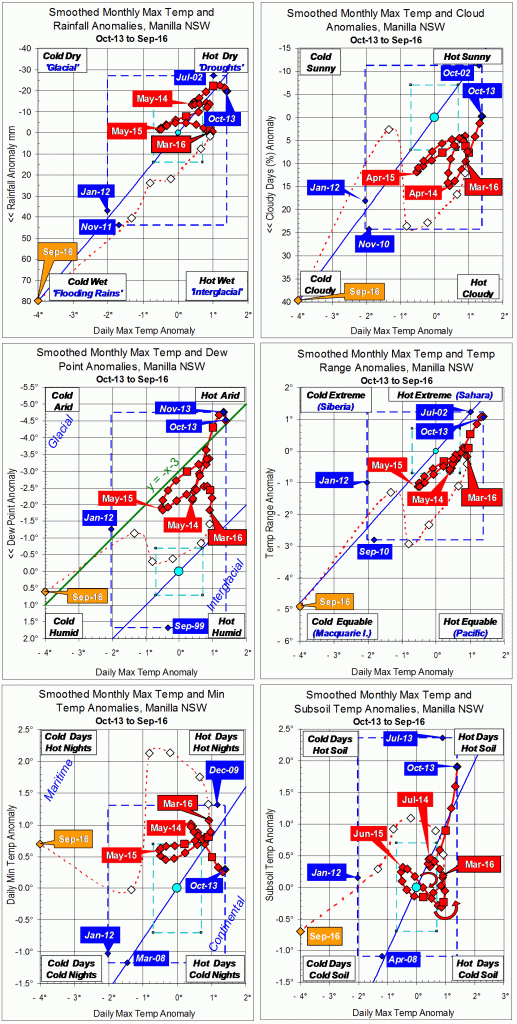Parametric plots of smoothed climate variables at Manilla
“September 2016 extreme cold and rain”
September raw anomaly data (orange)
September 2016 was extremely wet and had extremely cold days. Axes on the graph had to be extended to anomaly values of minus 80 mm for rainfall and minus four degrees for daily maximum temperature. In sympathy, cloudiness and dew point were extremely high and daily temperature range was extremely low.
On the first graph, partially-smoothed rainfall and temperature values had moved consistently in the same direction since March.
Fully smoothed data (red)
The latest fully-smoothed data point is March 2016.
Rainfall, temperature range anomaly and daily maximum temperature had been static for three months. The latter had been rather high, the others normal. Cloudiness, dew point and temperature range had begun to move down the graph, while daily minimum temperature and subsoil temperature had begun to move up.
Note:
Fully smoothed data – Gaussian smoothing with half-width 6 months – are plotted in red, partly smoothed data uncoloured, and raw data for the last data point in orange. January data points are marked by squares.
Blue diamonds and the dashed blue rectangle show the extreme values in the fully smoothed data record since September 1999.
Normal values are based on averages for the decade from March 1999.* They appear on these graphs as a turquoise (turquoise) circle at the origin (0,0). A range of anomalies called “normal” is shown by a dashed rectangle in aqua (aqua). For values in degrees, the assigned normal range is +/-0.7°; for cloudiness, +/-7%; for monthly rainfall, +/-14 mm.
* Normal values for rainfall are based on averages for the 125 years beginning 1883.


very interesting
thanks
I am glad you find it interesting, Jamal. Have you searched back through the earlier posts in the 3-year trend series? The earliest I have is:
When I scan some of your research abstracts on problematic correlations, and on climate change, I think you would also find this other series of posts of mine particularly interesting:
https://climatebysurly.com/category/climate-change/world-climate/